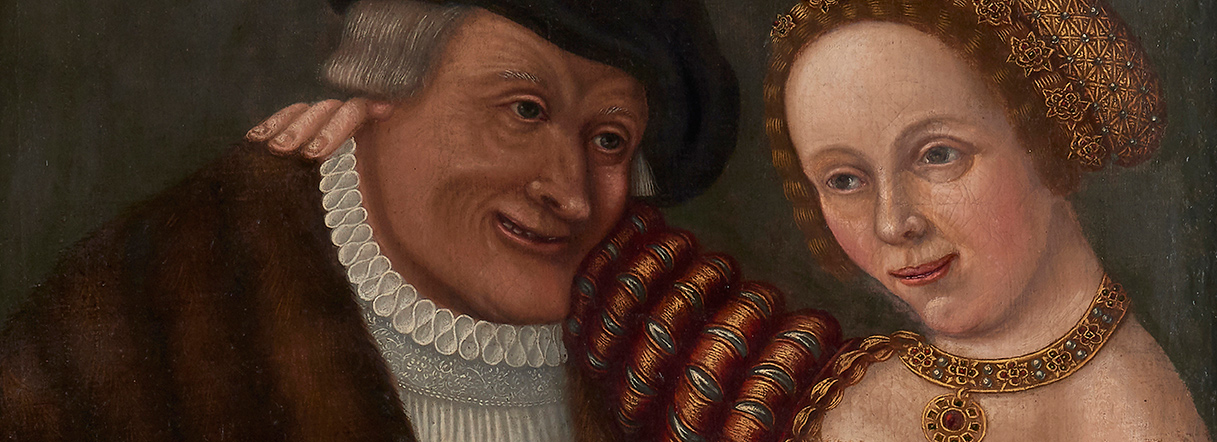
History
An aristocratic Nuremberg family.
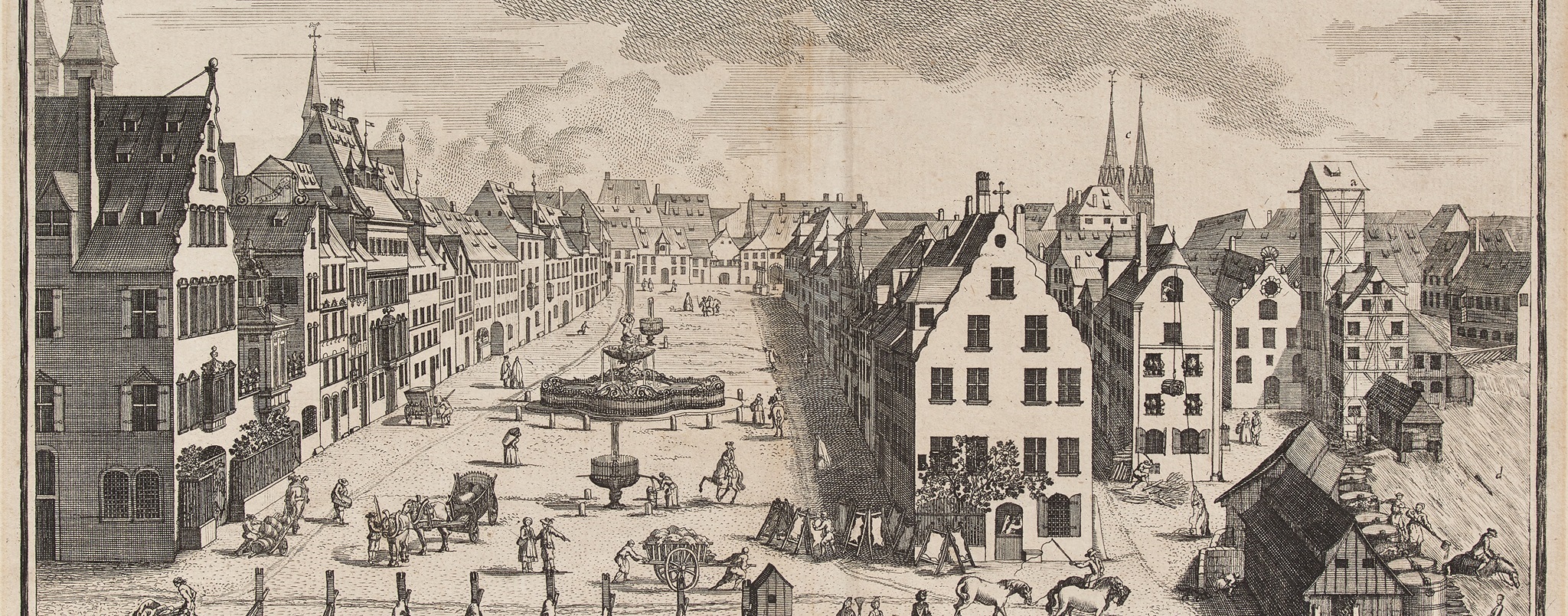
The history of the Tucher family is closely entwined with the history of Nuremberg. During the fifteenth and sixteenth centuries the Free Imperial City of Nuremberg flowered politically, economically, and culturally. In the so-called “Dance Statute'' of 1521 (a politically influential town hall ball held by the magistrate of the city to which only the families of the Nuremberg aristocracy who were members of the Inner Council of the city were invited) lists twenty families who had achieved this status, among them the Tuchers. 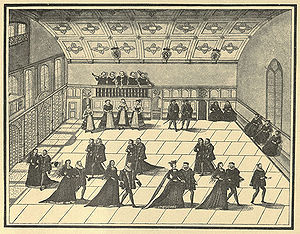 They were therefore among the most influential families during Nuremberg’s heyday. They were represented in the town council almost without interruption until the end of the Imperial period in 1806, and during this time, members of the family regularly held high offices in city governance.
They were therefore among the most influential families during Nuremberg’s heyday. They were represented in the town council almost without interruption until the end of the Imperial period in 1806, and during this time, members of the family regularly held high offices in city governance.
As in the case of the Tucher family, the Nuremberg aristocracy was made up of merchant families who achieved wealth and societal influence though overseas trade. In the fifteenth century these families began efforts in earnest to legitimize their ancestries and lineages in the style of medieval landed gentry.
The first written evidence of a Tucher in Nuremberg is dated 1309. 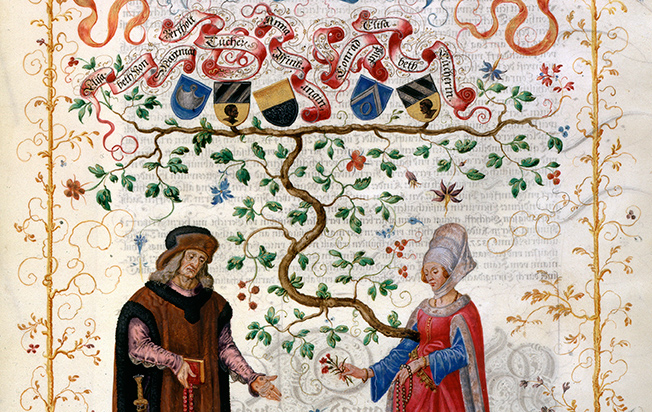 However, Konrad Tucher (died 1326) is considered to be the founding father of the family. The “Great Book of the Tuchers,” a particularly ornate example of a typical sixteenth-century lineage book dated 1590/98, which is preserved to this day, contains a large amount of information about the family tree. Such books served to document, represent, and legitimize a family lineage, and were much prized by wealthy patrician families in the sixteenth century.
However, Konrad Tucher (died 1326) is considered to be the founding father of the family. The “Great Book of the Tuchers,” a particularly ornate example of a typical sixteenth-century lineage book dated 1590/98, which is preserved to this day, contains a large amount of information about the family tree. Such books served to document, represent, and legitimize a family lineage, and were much prized by wealthy patrician families in the sixteenth century.
Although the family’s own sources, including the “Great Book of the Tuchers,” make reference to participation in Knights’ tournaments and to ministerial offices, these are most likely legends created to demonstrate chivalric origins. As the name Tucher implies, the ancestors of the family were much more likely to have been involved in textile production (Tuch = cloth), but there is no direct evidence for this.
After a dispute over the estate of Hans Tucher I who died in 1425, the family split into two distinct lines, both of which are extant to this day. 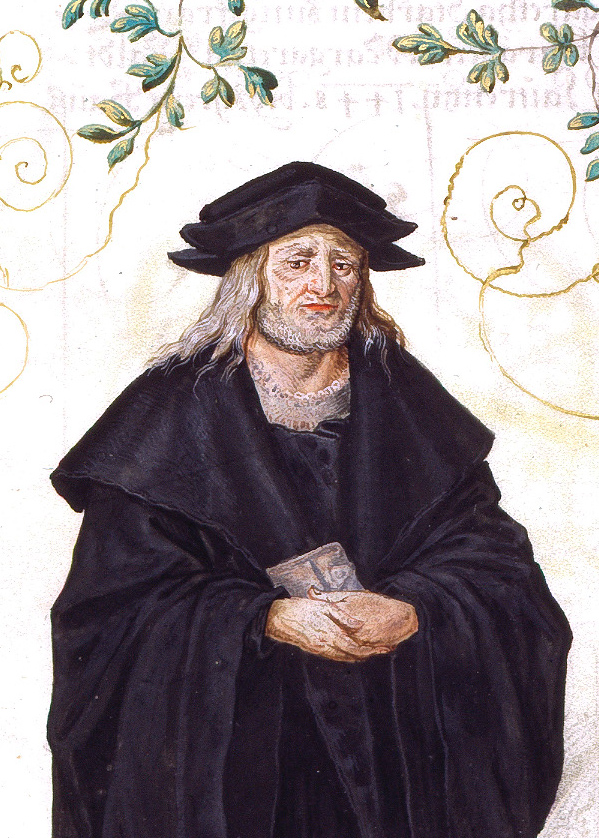
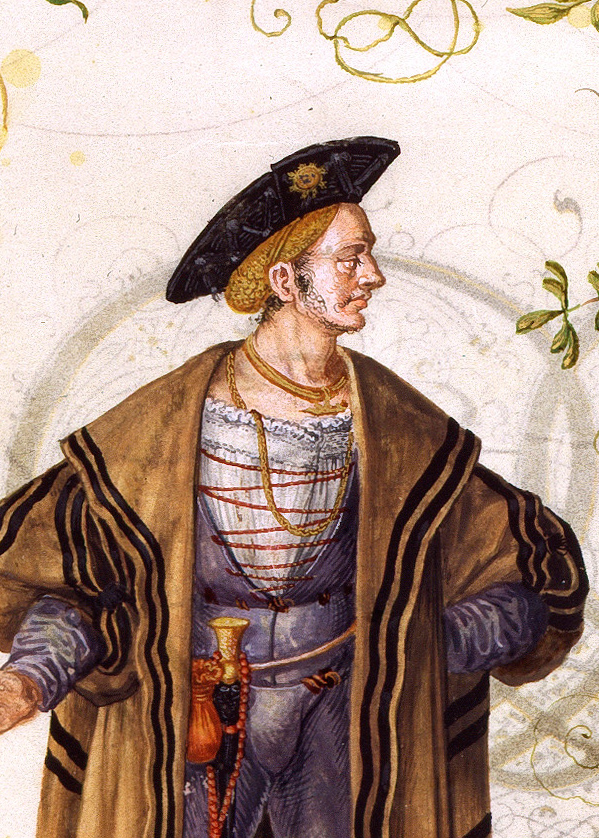 The older line was founded by Hans Tucher II (died 1449), and the younger line traces its lineage back to Endres Tucher I (died 1440).
The older line was founded by Hans Tucher II (died 1449), and the younger line traces its lineage back to Endres Tucher I (died 1440).
Beginning in the fourteenth century, the Tuchers grew continuously in prominence. Their political and economic, but also their social and cultural influence increased steadily. Beginning in 1340 the family were represented on the City Council. There is evidence of the “Tucher’sche Handelskompanie” (The Tucher Family Trading Company) as early as 1440. The company was represented by factories in important trading cities, among others Lyon, Genf, and Antwerp. In the sixteenth century, the Tuchers traded very successfully in saffron. In addition, the family was involved in mining during this time, and achieved considerable wealth.
The economic success of the Tucher family also occurred during Nuremberg’s economic and cultural golden age. In the fourteenth and fifteenth centuries, members of the family were not only represented in influential offices of state–their endeavors 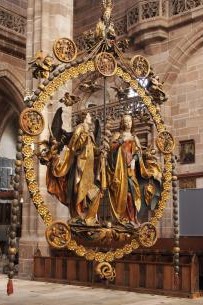 to achieve lasting memorials and representation are felt to this day though numerous foundations. The Tuchers were among the most important cultural patrons of the time, and around the year 1500, various family members commissioned important works of art in Nuremberg. Among these are the “Tucher Altar” by an unknown artist in 1440/50 (today to be found in the Church of Our Lady, Nuremberg ), the Tucher Memorial Plaque in the Church of St. Sebald, portraits by Albrecht Dürer (1499), and the “Angel’s Greeting” by Veit Stoß (1517-18) in the Church of St. Laurence.
to achieve lasting memorials and representation are felt to this day though numerous foundations. The Tuchers were among the most important cultural patrons of the time, and around the year 1500, various family members commissioned important works of art in Nuremberg. Among these are the “Tucher Altar” by an unknown artist in 1440/50 (today to be found in the Church of Our Lady, Nuremberg ), the Tucher Memorial Plaque in the Church of St. Sebald, portraits by Albrecht Dürer (1499), and the “Angel’s Greeting” by Veit Stoß (1517-18) in the Church of St. Laurence.
After the death of the Provost of St. Laurence, Lorenz Tucher I (1447-1503), his fortune went into the creation of the family foundation named after him. The Dr. Lorenz Tucher Foundation began in 1503 and exists to this day. The foundation preserves the family’s estates and cultural holdings.
Dating from the fifteenth century, the “Baumeisterbuch” (a work describing various building projects) of the City of Nuremberg by Endres Tucher II (1423-1507), and the report of the pilgrimage to Jerusalem by Hans Tucher VI (1428-1491) are among the most important writings preserved from this era. 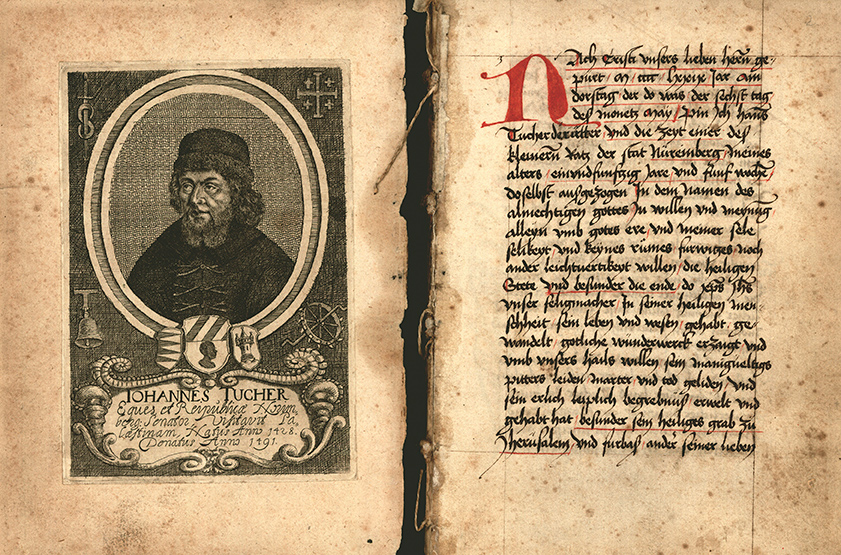 The aforementioned “Great Book of the Tuchers” (1590/98) dates from the sixteenth century. Among the most important buildings of this period is the family’s city residence in Nuremberg–the Tucher Castle. This edifice was commissioned by Lorenz Tucher II (1490-1554) between 1533 and 1544. Today it contains a museum which displays objects from the Tucher Family art collection.
The aforementioned “Great Book of the Tuchers” (1590/98) dates from the sixteenth century. Among the most important buildings of this period is the family’s city residence in Nuremberg–the Tucher Castle. This edifice was commissioned by Lorenz Tucher II (1490-1554) between 1533 and 1544. Today it contains a museum which displays objects from the Tucher Family art collection.
The Tuchers continued to expand their land holdings. After the acquisition of their main estate in Simmelsdorf in 1598, the family called itself Tucher von Simmelsdorf, a title which was recognized as a title of nobility by the Emperor in 1598. 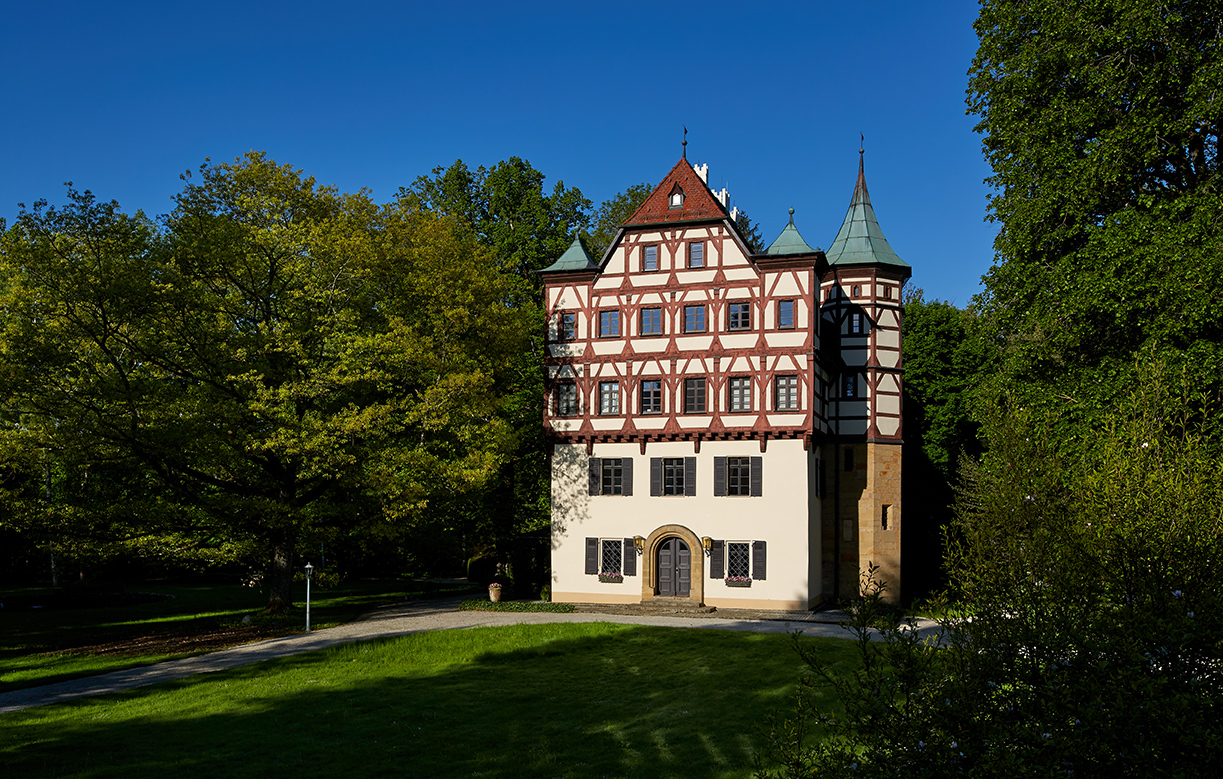 The Tuchers acquired various older fiefdoms at later dates. In 1705, the family was admitted to the Franconian Imperial Knighthood. In 1815, after the Free Imperial City of Nuremberg was assumed into the Kingdom of Bavaria, the Tuchers were registered in the Bavarian peerage. Since then, they have been the Barons of Tucher von Simmelsdorf.
The Tuchers acquired various older fiefdoms at later dates. In 1705, the family was admitted to the Franconian Imperial Knighthood. In 1815, after the Free Imperial City of Nuremberg was assumed into the Kingdom of Bavaria, the Tuchers were registered in the Bavarian peerage. Since then, they have been the Barons of Tucher von Simmelsdorf.
The Tuchers’ trading company existed until 1648. The liquidation of the company was the result of trade and financial crises in greater parts of Europe. The enormous financial penalties brought the family deep economic damages, and they experienced a loss of societal influence beginning in the seventeenth century. The end of Nuremberg’s status as an imperial city in 1806 also ended the influence of the Tuchers on the destiny of the city through their representation on the city council.
In 1855 the Tuchers purchased the Bavarian Royal Brewery, which became known as the “Barons von Tucher Brewery.” The brewery is still known as Tucher today, but is no longer owned by the family.
Tuchers have held offices in the administration of Bavaria since the nineteenth century. Heinrich von Tucher (1853-1925) was the Bavarian Envoy in Rome. Hans Christoph von Tucher (1905-1968) was a close confidant of Theodor Heuss (1884-1963).
The Tucher Family Cultural Foundation has existed since 2012. It promotes the preservation of and research into the art and cultural holdings of the Tucher family.


